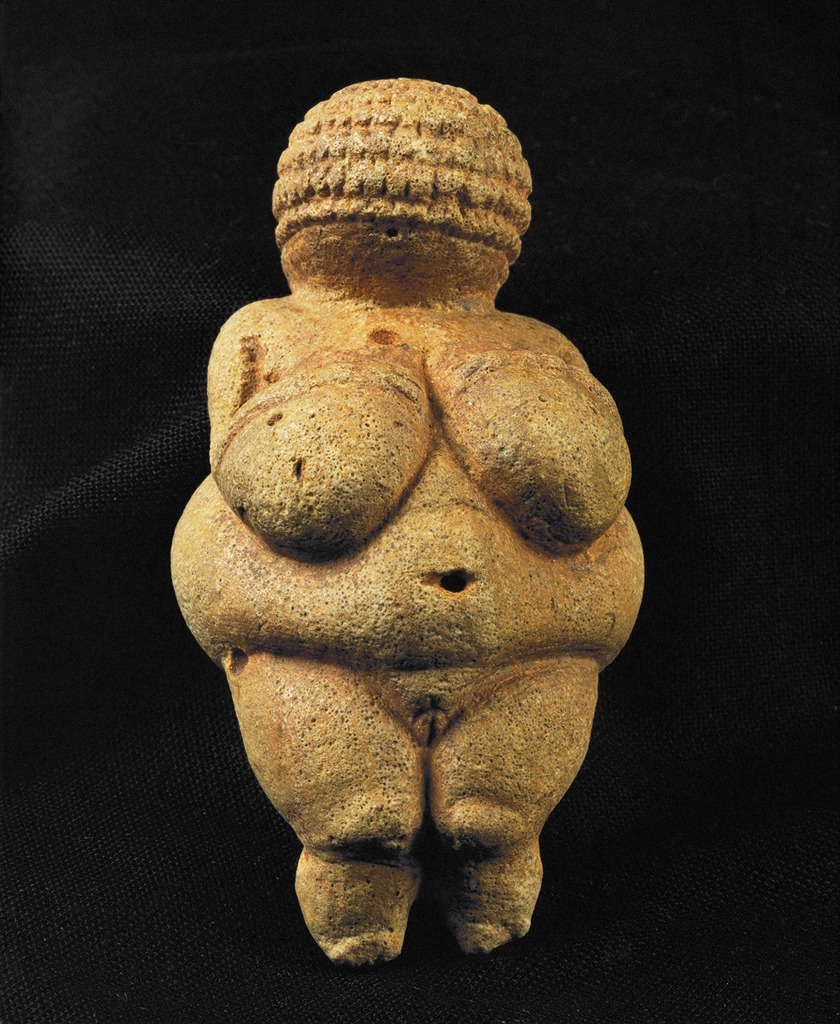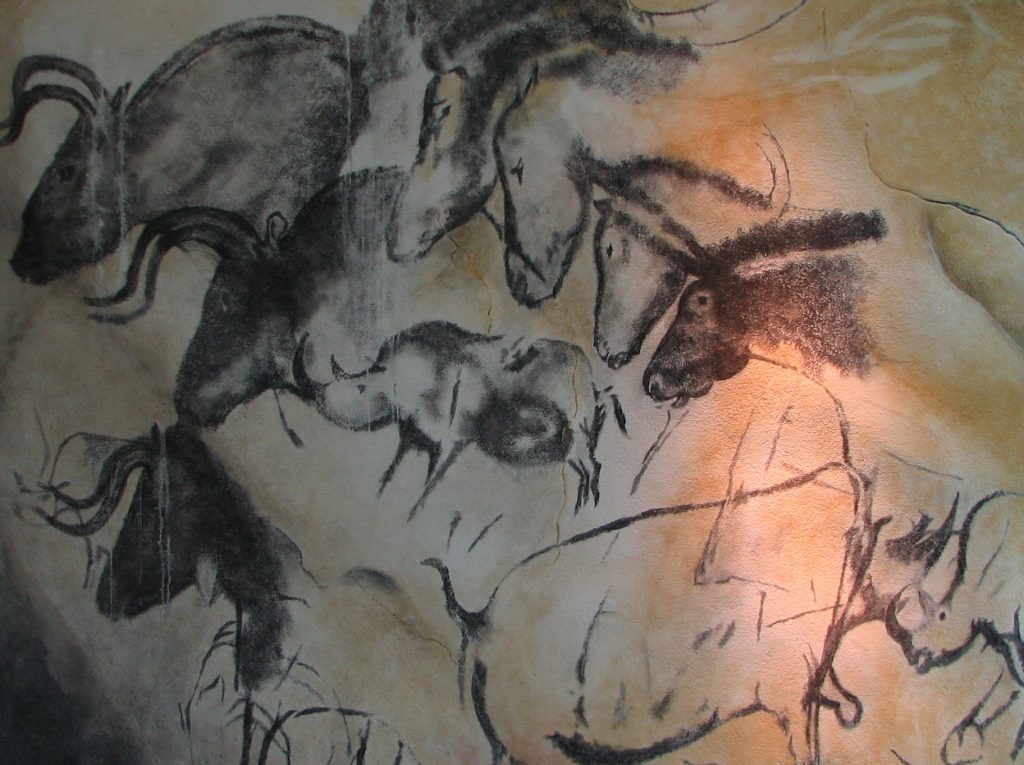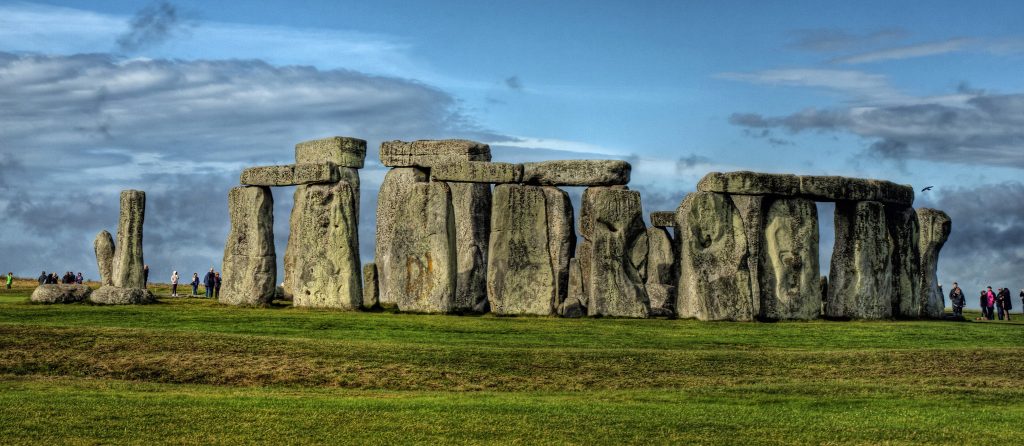Chapter 8.1: Prehistoric Art (ca. 3000 B.C.E.)

The term “prehistoric” refers to the time before written history. In the West, writing was invented in ancient Mesopotamia just before 3000 B.C.E., so this period includes visual culture (paintings, sculpture, and architecture) made before that date. The oldest decorative forms we can recognize as art come from Africa and may date back to 100,000 B.C.E. In contrast, the oldest cave paintings known are about 40,800 years old, and although we used to think that only our species, Homo Sapiens, made art—anthropologists now speculate that Neanderthals may have made at least some of these very early images.
The caves at Chauvet-Pont-d’Arc (see the image below), Lascaux, Pech Merle, and Altamira contain the best-known examples of prehistoric painting and drawing. The renderings of animals and even some humans from the cave at Chauvet-Pont-d’Arc convey a complex mix of naturalism and abstraction. Archeologists who study Paleolithic (Old Stone Age) era humans believe that these paintings discovered in 1994 in the Ardèche Valley in France are more than 30,000 years old. The images found at Lascaux and Altamira are more recent, dating to approximately 15,000 B.C.E. The paintings at Pech Merle date to both 25,000 and 15,000 B.C.E. To learn more about Lascaux, Altamira, and Perch Merle, see the articles in Additional Recommended Resources at the end of this module.

Video
The following Ted Talk features paleoanthropologist Genevieve von Petzinger as she discusses the geometric signs found in early European Ice Age rock art sites.
Why are these 32 symbols found in ancient caves all over Europe? (12:06)
Neolithic
The Neolithic revolution is one of the most profound developments in all of human history and occurred during the Prehistoric Era. This is when our ancestors learned to farm and domesticate animals, allowing them to give up their nomadic ways and settle down to build cities and civilizations. Stonehenge stands as one of the most iconic structures from that period. Dating to approximately 3000 B.C.E. and located on Salisbury Plain in England, the structure is larger and more complex than anything built before it in Europe. Stonehenge gives us an example of the cultural advances brought about by the Neolithic revolution—the most important development in human history. The way we live today, settled in homes, close to other people in towns and cities, protected by laws, eating food grown on farms, and with leisure time to learn, explore, and invent is all a result of the Neolithic revolution, which occurred approximately 11,500-5,000 years ago. The revolution during this period, which led to our way of life, was the development of technology needed to plant and harvest crops and to domesticate animals.

Media Attributions
- Figure 1. Venus of Willendorf, 30,000-25,000 BCE, limestone. (Naturhistorisches Museum, Vienna, Austria; Image source: Erich Lessing Culture and Fine Arts Archives/ART RESOURCE, N.Y. via Artstor. Used with permission, for education use only).
- Figure 2. Chauvet Cave, Lion Panel: With Mammoth; Superimposed animal images (France; Image source: University of California, San Diego via Artstor. Used with permission, for education use only).
- Figure 3. Stonehenge, c. 3,000 B.C.E., Salisbury Plain, England (Image source: Neil Howard on Flickr) is licensed under a CC BY-NC (Attribution NonCommercial) license
Candela Citations
- A brief history of Western culture. Authored by: Dr. Beth Harris and Dr. Steven Zucker. Provided by: Smarthistory. Retrieved from: https://smarthistory.org/a-brief-history-of-western-culture/. License: CC BY-NC-SA: Attribution-NonCommercial-ShareAlike
- Paleolithic art, an introduction. Authored by: Dr. Beth Harris and Dr. Steven Zucker. Provided by: Smarthistory. Retrieved from: https://smarthistory.org/paleolithic-art-an-introduction/. License: CC BY-NC-SA: Attribution-NonCommercial-ShareAlike
- The Neolithic revolution. Authored by: Dr. Senta German. Provided by: Smarthistory. Retrieved from: https://smarthistory.org/the-neolithic-revolution/. License: CC BY-NC-SA: Attribution-NonCommercial-ShareAlike

